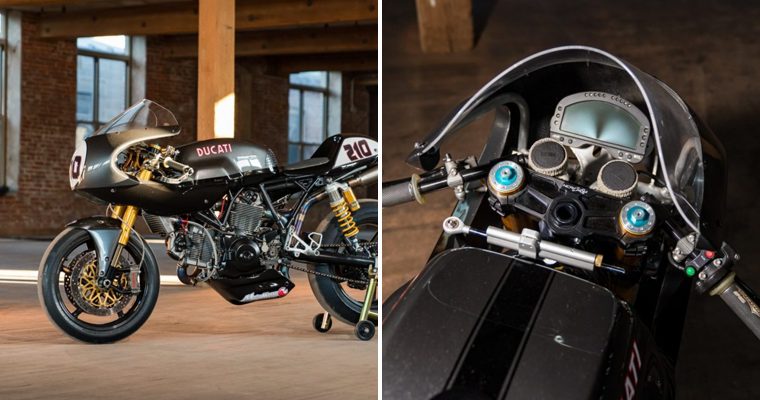In the early 1930s the US was in the grips of the Great Depression and like all motorcycle manufacturers Harley-Davidson struggled to continue production and sell large capacity machines.
By 1933 the company was running at 20 per cent capacity, but optimism prevailed and a new overhead valve motor was developed to replace the side-valve. This was the 61 cubic inch (1000 cc) Knucklehead, Harley’s first production overhead valve engine. Originally intended for 1935 release, delays in development eventually saw it appear in 1936 in the E and EL 61.
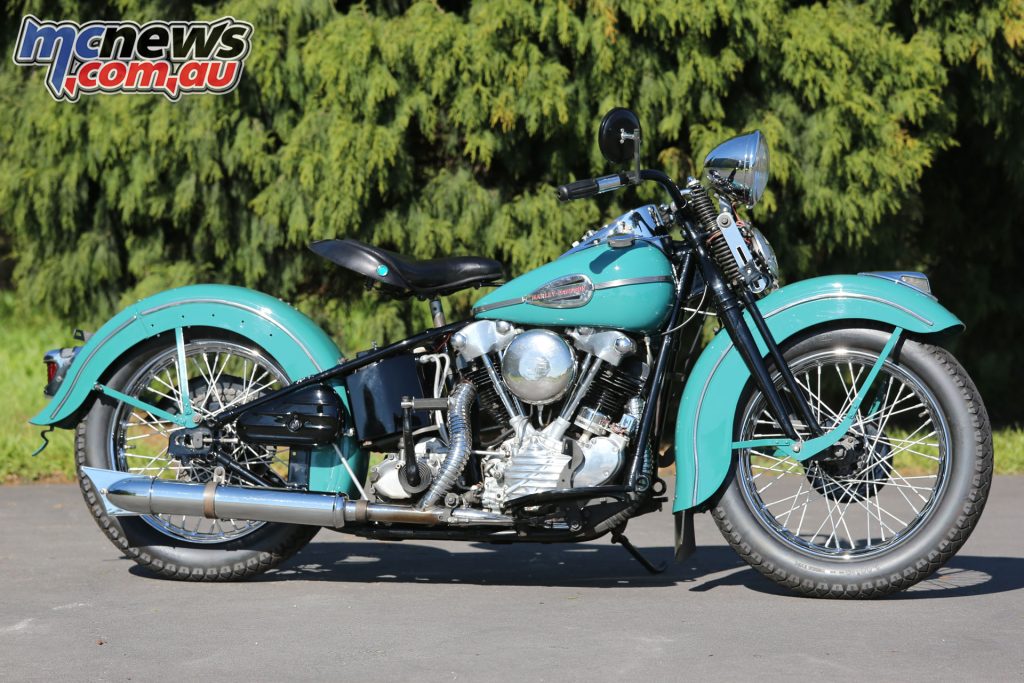 The Knucklehead proved a landmark model for Harley-Davidson
The Knucklehead proved a landmark model for Harley-Davidson
Harley created the new overhead valve motor from scratch, including a single camshaft with four lobes to reduce noise. As on most British overhead valve engines of the day, the valve stems and springs were exposed, resulting in an unpleasantly oily ride.
The newly designed rocker housings gave the ‘Knucklehead’ its moniker. Seated atop the twin cylinders, the cast form resembled a closed fist with “knuckles” exposed. Lubrication was dry sump and the hemispherical combustion chamber set the valves at 90 degrees to each other.
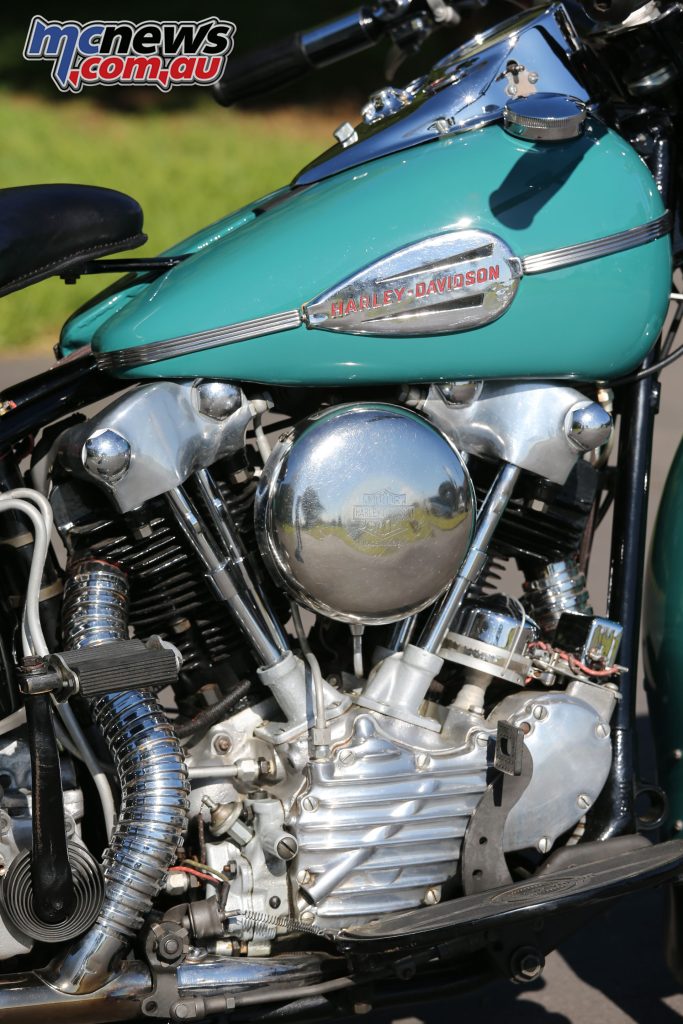 The engine was nicknamed the Knucklehead due to the shape of the rocker covers
The engine was nicknamed the Knucklehead due to the shape of the rocker covers
Compared to the earlier side-valve engine the Knucklehead provided much more power; 37 horsepower for the E and 40 horsepower for the higher compression EL. The new engine also accentuated the 61’s stylish, muscular profile. The polished rocker boxes and pushrod tubes exuded horsepower, and a stout dry clutch and four-speed gearbox ensured that power was useable.
But it wasn’t just the engine that was ground breaking for Harley. From the shape of the fuel tank to the modern front fork, the new model provided a fresh look to the revered marque.
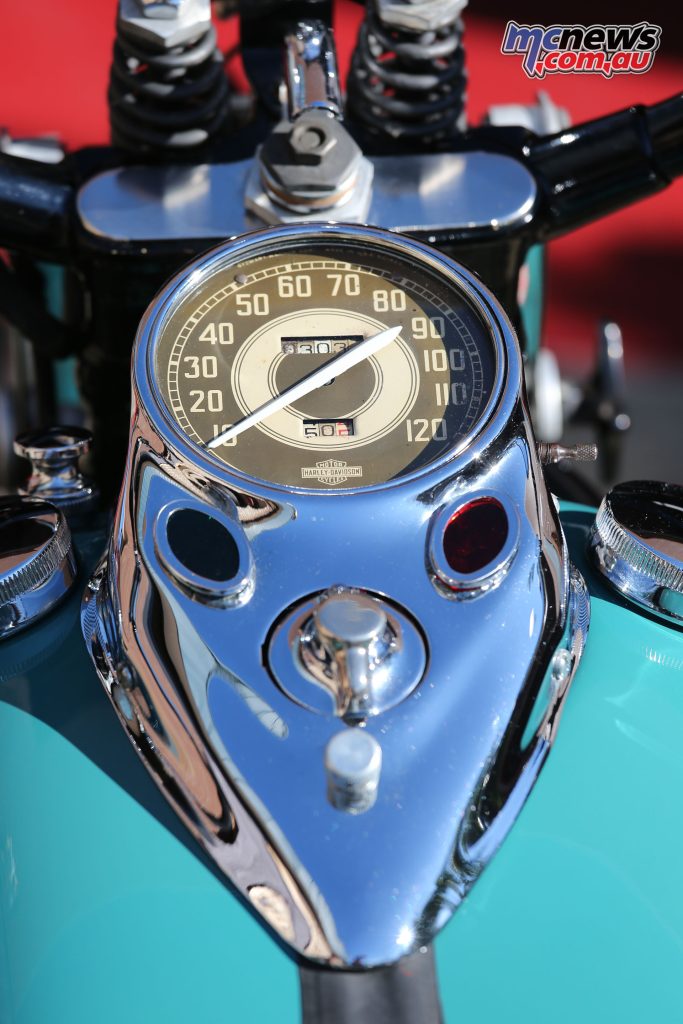 The tank mounted instrumentation, is still recognisable and seen on Harley models today
The tank mounted instrumentation, is still recognisable and seen on Harley models today
Rolling on 18-inch wheels the seat height was a mere 660 mm, and the chassis provided a clean unbroken line from the rear axle to the steering head. But the Knucklehead was more than just good-looking. Despite weighing close to 270 kg fully wet, the top speed was still around 160 km/h.
By the end of the 1930s the Sixty-One overhead valve was beginning to look dated and for 1940 the style was revamped. Externally, the whole bike was restyled to give it a tougher, cleaner, more modern look.
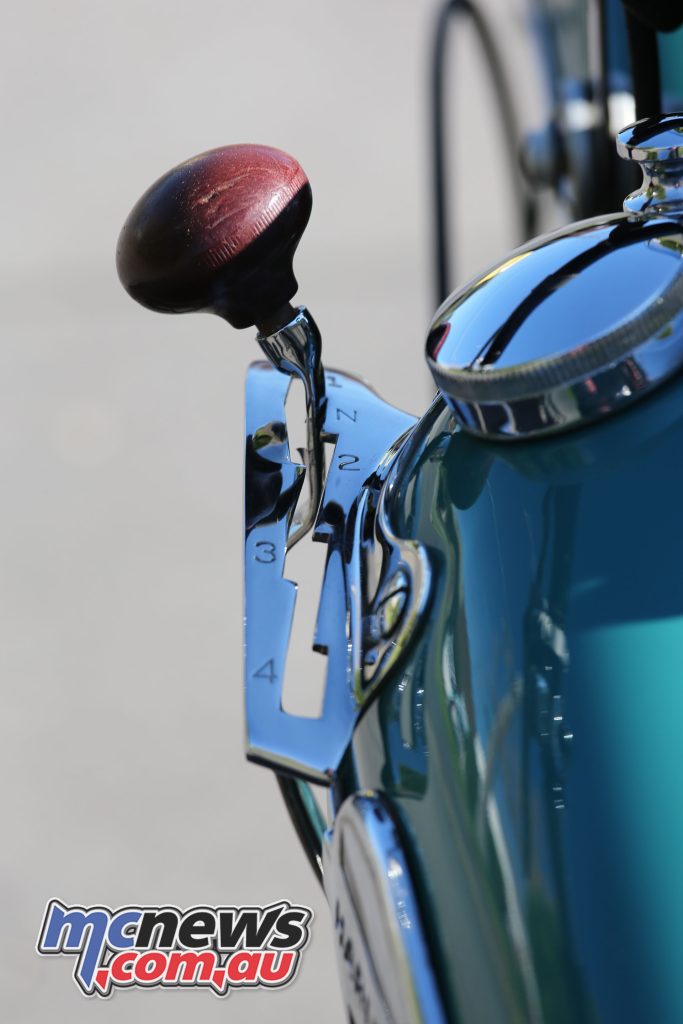 Hand shift found on the left on this 1941 EL61
Hand shift found on the left on this 1941 EL61
This look would set the style for Harley’s Big Twins, not only through the war years, but also with the next generation Panhead. This classic style was also resurrected on the Heritage Springer Softails of the 1990s. New for the 1941 EL was an ‘aeroplane style’ speedometer with reset trip meter, and rocket fin muffler.
RelatedPosts  Ducati 996 SPS Pista – Pinnacle of a significant Ducati lineage April 7, 2023
Ducati 996 SPS Pista – Pinnacle of a significant Ducati lineage April 7, 2023  SunCity Harley-Davidson Townsville charity ride April 7, 2023
SunCity Harley-Davidson Townsville charity ride April 7, 2023
Harley also included a new oil pump this year, and a slightly smaller Linkert carburettor to smooth out the low-speed running. To overcome the sticking and dragging clutch the 1941 EL received an all-new clutch. The 1941 Knucklehead was to be the last civilian Harley until 1945 as the company concentrated on military projects.
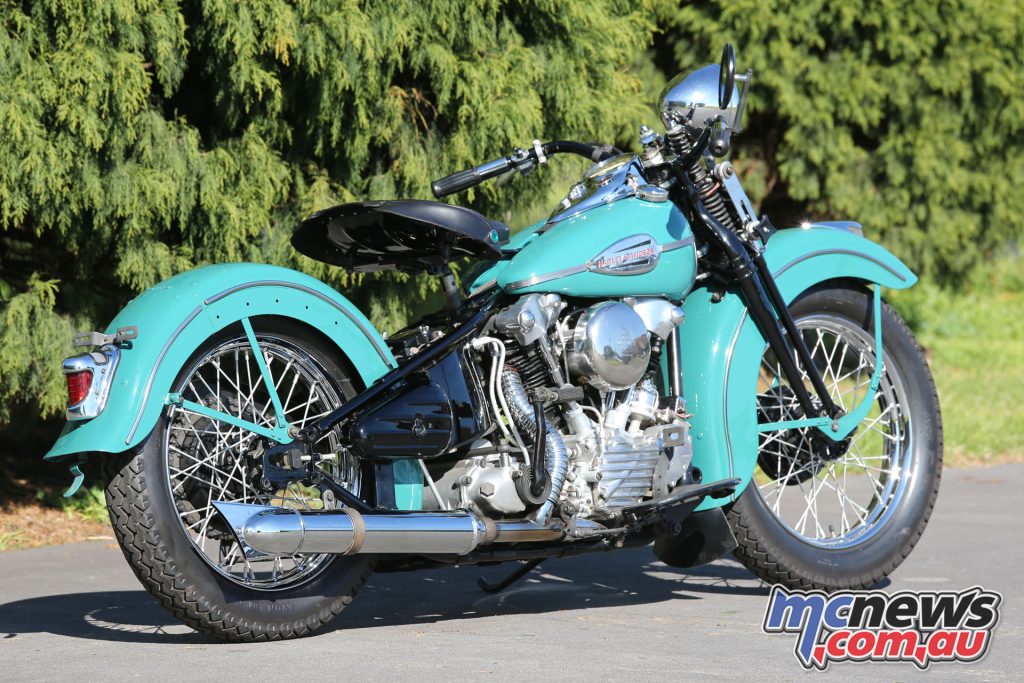 The Knucklehead’s style is timeless
The Knucklehead’s style is timeless
But the Knucklehead was arguably the most important motorcycle in Harley’s history. The Knucklehead was the right machine at the right time. Harley-Davidson managed to survive the Depression and the Knucklehead initiated a new chapter for the company.
Without this engine, the company simply wouldn’t have endured. Compared to modern production levels, Knucklehead manufacture was relatively modest. This, combined with few surviving more than eighty years, has seen the Knucklehead become one of the most desirable and sought after production Harley-Davidsons.
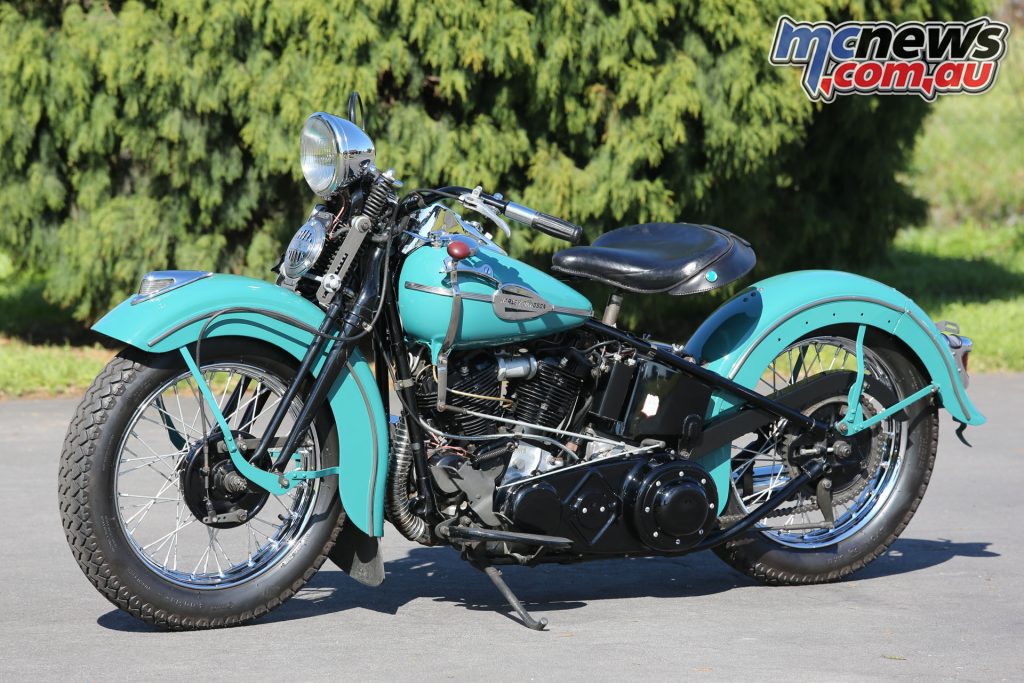 Limited manufacturing numbers make the Knucklehead a much sought after machine even todayFive Facts about the Harley KnuckleheadIn March 1937 Joe Petrali, on an EL 61, set a new top speed record of 136 mph (219 km/h) at Daytona Beach, eclipsing the earlier record set by Indian.Soon afterwards, Fred Ham set a new 24-hour record at California’s Muroc Dry Lake. He covered over 1,825 miles (2,937km) at an average speed of 76 mph (122 km/h).The E and EL 61 was much more successful in 1936 than Harley anticipated. With nearly 2,000 produced, demand exceeded production capacity.For 1941 a larger OHV stable mate, the 74 cubic inch Model F and FL, joined the Sixty-one. Boring and stroking the Sixty-one achieved the larger capacity. The 74 proved immediately more popular then the 61, with 2608 sold, compared to 2541 of the smaller 1000, in 1941After an 11-year run the Knucklehead finally finished in 1947, replaced by the Panhead engine with aluminium head and hydraulic lifters.Tags: Harley-DavidsonHarley-Davidson KnuckleheadIan Falloon
Limited manufacturing numbers make the Knucklehead a much sought after machine even todayFive Facts about the Harley KnuckleheadIn March 1937 Joe Petrali, on an EL 61, set a new top speed record of 136 mph (219 km/h) at Daytona Beach, eclipsing the earlier record set by Indian.Soon afterwards, Fred Ham set a new 24-hour record at California’s Muroc Dry Lake. He covered over 1,825 miles (2,937km) at an average speed of 76 mph (122 km/h).The E and EL 61 was much more successful in 1936 than Harley anticipated. With nearly 2,000 produced, demand exceeded production capacity.For 1941 a larger OHV stable mate, the 74 cubic inch Model F and FL, joined the Sixty-one. Boring and stroking the Sixty-one achieved the larger capacity. The 74 proved immediately more popular then the 61, with 2608 sold, compared to 2541 of the smaller 1000, in 1941After an 11-year run the Knucklehead finally finished in 1947, replaced by the Panhead engine with aluminium head and hydraulic lifters.Tags: Harley-DavidsonHarley-Davidson KnuckleheadIan Falloon






